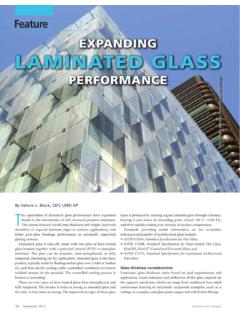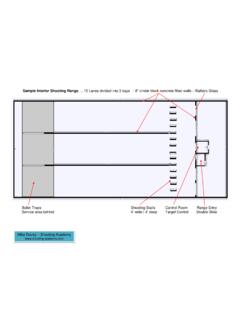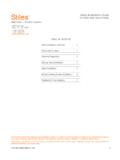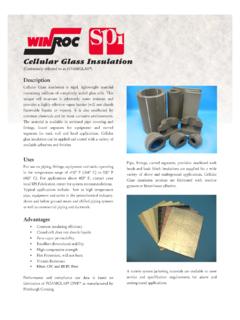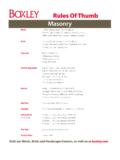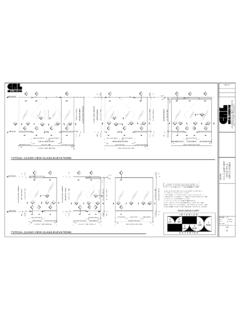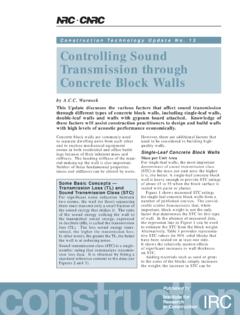Transcription of Glass Fiber Reinforced Polymer (GFRP) Rebar - …
1 !!Hughes Brothers, Inc. 210 N. 13th Street Seward NE 68434 Ph:800-869-0359 2011 Aslan 100 Fiberglass Rebar Glass Fiber Reinforced Polymer (GFRP) Rebar - Aslan 100 series FIBERGLASS Rebar November 10, 2011 !!2!Hughes Brothers, Inc. 210 N. 13th Street Seward NE 68434 Ph:800-869-0359 2011 Aslan 100 Fiberglass Rebar Corrosion of internal reinforcing steel is one of the chief causes of failure of concrete structures. Inevitably concrete will crack, creating a direct avenue for chlorides to begin oxidizing the steel Rebar . Fiber Reinforced Polymers (FRP s) are a proven and successful alternative reinforcing that will give structures a longer service life. A complete spectrum of authoritative consensus design guides, test methods, material and construction standards, product procurement specifications and qualification procedures are available to the designer and owner to safely and commercially implement FRP s in many different types of structures.
2 Since 1993, Hughes Brothers has been at the forefront of worldwide academic and industry efforts to define consensus standards and methods. Many thousands of structures remain in-service and are performing well, that incorporate Aslan 100 Glass Fiber Reinforced Polymer (GFRP) also referred to as fiberglass Rebar . Concrete Exposed to De-Icing Chlorides Bridge Decks & Railings Median Barriers Approach Slabs Salt Storage Facilities Continuously Reinforced Concrete Paving Precast Elements - Manhole Covers, Culverts, Rail Grade Crossings, Full Depth Deck Panels, etc. Concrete Exposed to Marine Chlorides Sea Walls, Wharfs, Quays & Dry Docks Coastal Construction exposed to Salt Fog Desalinization intakes Port Aprons !!3!Hughes Brothers, Inc. 210 N. 13th Street Seward NE 68434 Ph:800-869-0359 2011 Aslan 100 Fiberglass Rebar Concrete Exposed to High Voltages & Electromagnetic Fields Light & Heavy Rail 3rd Rail Isolation Hospital MRI Areas High Voltage Substations Cable Ducts & Banks Aluminum Smelters & Steel Mills Radio Frequency Sensitive Areas High Speed Highway Tolling Zones Concrete Susceptible to Corrosion Waste Water Treatment Inadequate Concrete Cover Architectural Concrete Elements Historic Preservation Benefits of Aslan 100 Fiberglass Rebar Impervious to Chloride Ion and low pH chemical attack Tensile strengths greater than steel 1/4th the weight of steel Rebar Transparent to magnetic fields and radio frequencies Electrically non-conductive Thermally non-conductive!
3 !!4!Hughes Brothers, Inc. 210 N. 13th Street Seward NE 68434 Ph:800-869-0359 2011 Aslan 100 Fiberglass Rebar Tunneling & Mining Deep Foundation Tunnel Boring Machine Soft-eye Openings For Launch & Reception Sequential Excavation or NATM Tunneling Soil Nails & Earth Retention Rock Bolts & Cable Bolts Masonry Strengthening & Historic Preservation Strengthening for Event Loading of Clay & Concrete Masonry Historic Preservation Restoration and Pinning of Stone Elements !!5!Hughes Brothers, Inc. 210 N. 13th Street Seward NE 68434 Ph:800-869-0359 2011 Aslan 100 Fiberglass Rebar Aslan 100 Mechanical Properties Tensile, Modulus & Strain Design Tensile & Modulus Properties Tensile and Modulus Properties are measured per ASTM D7205-06, Standard Test Method for Tensile Properties of Fiber Reinforced Polymer Matrix Composite Bars. The ultimate tensile load is measured and the tensile modulus is measured at approximately 10% to 50% of the ultimate load.
4 The slope of the stress-strain curve is determined as the tensile modulus. Ultimate Strain is extrapolated from the ultimate load divided by the nominal area and modulus. The area used in calculating the tensile strength is the nominal cross sectional area. The Guaranteed Tensile Strength , f*fu is as defined by ACI as the mean tensile strength of a given production lot, minus three times the standard deviation or f*fu = fu,ave 3 . The Design or Guaranteed Modulus of Elasticity is as defined by ACI as the mean modulus of a production lot or Ef = Ef,ave . Material Certs & Traceability Material test certs are available for any production lot of Aslan 100 bar. The certs are traceable to the bar by means of a series of bar marks imprinted along the length of the bar in intervals showing the bar diameter, stock order and production date.
5 In addition to ASTM D7205 Tensile, Modulus and Strain values, the test cert includes a full accounting of various additional properties and lab tests performed on the production lot. Hughes Brothers reserves the right to make improvements in the product and/or process which may result in benefits or changes to some physical-mechanical characteristics. The data contained herein is considered representative of current production and is believed to be reliable and to represent the best available characterization of the product as of July 2011. Tensile tests per ASTM D7205. Nominal Diameter Nominal Area f*fu - Guaranteed Tensile Strength Ultimate Tensile Load Ef - Tensile Modulus of Elasticity Ultimate Strain Size mm in mm2 in2 MPa ksi kN kips GPa psi 106 % 2 6 896 130 46 3 10 827 120 46 4 13 758 110 46 5 16 724 105 46 6 19 690 100 46 7 22 655 95 46 8 25 1 620 90 46 9 29 1- 586 85 46 10 32 1- 551 80 46 11* 35 1- 482 70 104* 46 12* 38 1- 1160 448 65 117* 46 13* 41 1- 1338 413 60 124* 46 !
6 * Tensile properties of #11, #12 & #13 bar are NOT guaranteed due to the inability to achieve a valid bar break per ASTM D7205. !!6!Hughes Brothers, Inc. 210 N. 13th Street Seward NE 68434 Ph:800-869-0359 2011 Aslan 100 Fiberglass Rebar Cross Sectional Area The design properties are determined using Nominal diameters and equivalent calculated cross sectional areas. Surface undulations and sand coatings that facilitate bond are accommodated in ASTM D7205, section , with a tolerance of minus zero, plus 20% as determined by the Archimedes method of volume displacement in a fluid. Bond Bond to concrete is achieved in the Aslan 100 series by means of a slight surface undulation created by an external helical wrap along with a sand coating. There are many different methods for measuring the bond characteristics of a bar with each test method providing a different value depending on the influences of the testing apparatus and method.
7 As a means of determining characteristic bond strength, block pullout tests are often used as a relative gage of bond performance. However, to accurately define the bond strength it is necessary to perform full -scale beam or beam lap splice tests on a bar. In consensus design guidelines such as ACI, CSA and AASHTO, perfect bond is assumed for flexural design. With any of the test methods for bond, caution is urged as a very wide scatter of statistical results is found depending on the strain in the bar in the test and inaccuracies involved in the measuring of crack widths. The bond depended coefficient Kb is empirically derived from beam specimens where the dimensions of the beam, concrete strengths, bar properties and strain in the bars are carefully measured. After initial cracking has occurred, the crack widths are measured using LVDT s and the bond dependent coefficient for Aslan 100 GFRP bars is derived.
8 Characteristic Properties Characteristic Properties are those that are inherent to the FRP bar and not necessarily measured or quantified from production lot to production lot. Aslan 100 bars have been used in all the basic fundamental research studies that appear in peer review papers establishing the consensus design equations for serviceability, flexural capacity, crack widths and development lengths for FRP bars. The designer is urged to follow consensus equations in authoritative publications. The Kb bond dependent coefficient for Aslan 100 GFRP bars is .. Kb = per ASTM draft test method. As used in ACI equation 8-9. Kb testing Kiewit Institute Lap Splice bond beam tests Purdue University LVDT measuring Crack Width !!7!Hughes Brothers, Inc. 210 N. 13th Street Seward NE 68434 Ph:800-869-0359 2011 Aslan 100 Fiberglass Rebar Transverse Shear Strength The transverse shear strength of the Aslan 100 GFRP bars are frequently measured from random production runs.
9 The testing is performed per ACI test method and ASTM D7617. The property is consistent across bar diameters. Transverse Shear Strength = 22,000 psi (150 MPa) Coefficient of Thermal Expansion The Coefficient of Thermal Expansion or CTE of the GFRP bars is an inherent characteristic property and if sufficient concrete cover of two bar diameters is used, it is not an important design consideration. This is because there is not enough radial force to cause reflective concrete cracking if adequate concrete confinement is present. These findings are elaborated in the work of Aiello, Focacci & Nanni in ACI Materials Journal, Vol. 98 No. 4, July-Aug 2001, pp. 332-339 Effects of Thermal Loads on Concrete Cover of FRP Reinforced Elements: Theoretical and Experiential Analysis. Further, the transverse CTE is a non-linear property and affected by the helical wrap on the Aslan 100 bar.
10 Differing labs achieve a wide scatter in measured CTE results depending on the test method and set-up. Durability - Alkali Resistance without load One of the main concerns about the use of Glass FRP s is the potential to be degraded in the long term by the high pH environment of the concrete itself. This phenomenon is analogous to an alkali silica reaction with certain types of aggregate. A great deal of research has been performed on this subject with the conclusion being that a properly designed and manufactured composite system of resin and Glass can adequately protect the Glass fibers from degradation. Aslan 100 bar is made only from a vinyl ester resin matrix using ECR Glass fibers. Selection of high caliber raw materials, which have appropriate sizing chemistry resulting in a good bond between the ECR Fiber itself and the protective resin are a key to successful long term performance of the GFRP bar.
